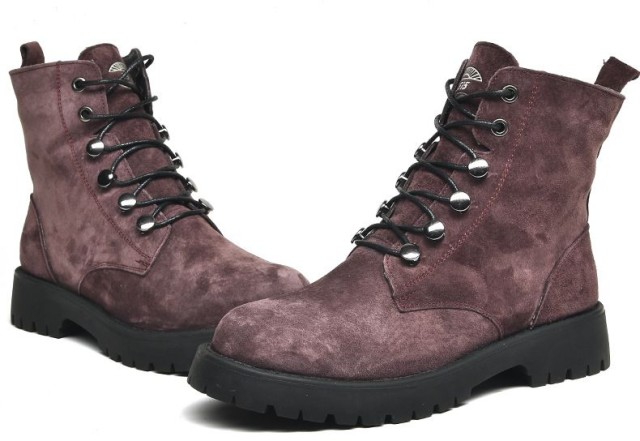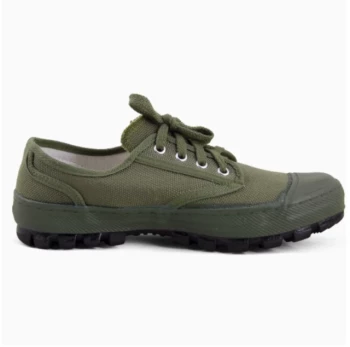For discerning footwear buyers, the upfront cost of Goodyear welted shoes often raises eyebrows. Yet, beneath this initial investment lies an engineering marvel designed to last decades—not seasons. This guide unpacks the science and economics behind welted footwear, revealing why they dominate military applications and how they save owners thousands over time.
The Science Behind Repairability
Anatomy of the Goodyear Welt: Stitches, Channels, and Buffers
Goodyear welting isn’t just stitching—it’s a multi-layered defense system. A leather or synthetic welt strip is sewn to the shoe’s upper, then zigzag-stitched to the outsole. This creates:
- A water-resistant barrier: The welt acts as a gasket, preventing moisture from seeping into the shoe’s core.
- Cork cushioning: The cavity between sole and upper is filled with cork, which molds to your foot over time, enhancing comfort.
- Modular repairability: Cobblers can detach and replace worn soles without damaging the upper—a process impossible with glued constructions.
Research shows welted shoes withstand 2–3 times longer under heavy use compared to glued alternatives.
Why Glued Soles Fail: The Point of No Return
Glued footwear relies on adhesive bonds that degrade with:
- Heat exposure: Summer temperatures weaken glue integrity.
- Flex cycles: Repeated bending cracks adhesive layers.
- Moisture intrusion: Water seeps into glue lines, causing delamination.
Once separation begins, most glued shoes reach an irreversible failure state. Welted shoes, however, can be disassembled and rebuilt—often for less than 30% of the original price.
The Economics of Long-Term Ownership
Resoling Costs vs. Replacement Cycles: A 10-Year Breakdown
| Footwear Type | Initial Cost | Resole Cost | Replacements Needed | 10-Year Total |
|---|---|---|---|---|
| Goodyear Welted | $300–$500 | $80–$120 | 0–1 | $380–$620 |
| Glued Construction | $100–$200 | N/A (Unrepairable) | 3–5 | $300–$1,000 |
Assumptions: Moderate wear, 1 resole every 3–5 years for welted shoes; glued shoes replaced annually.
Welted shoes become cheaper than disposable footwear within 4–6 years. For professionals like chefs or nurses who walk miles daily, the savings compound significantly.
Sustainability Wins: Reducing Waste Through Repairability
The average American discards 7 pairs of shoes yearly. Welted construction:
- Slows consumption: Fewer replacements mean less landfill waste.
- Uses eco-friendly materials: Natural cork and leather biodegrade faster than synthetic foams.
- Supports local economies: Cobblers thrive servicing repairable footwear.
Real-World Proof of Durability
Case Study: Military & Work Boots That Last Decades
Historical records show Goodyear welted boots were standard issue in World Wars I and II. Their design solved critical problems:
- Trench conditions: Welted seams resisted mud and water infiltration.
- Forced marches: Re-soling extended boot life during supply shortages.
Modern applications persist in:
- Oil rig crews: Welted boots handle chemical exposure and abrasion.
- Forestry workers: Chainsaw-resistant models last 5+ years with maintenance.
Cobbler Insights: Most Common Repairs and Avoidable Failures
Interviews with master cobblers reveal:
- Top repairs: Heel replacements (60%), sole stitching (25%), cork replenishment (15%).
- Avoidable issues: 90% of premature failures stem from neglecting basic care—drying shoes properly, using shoe trees, and conditioning leather.
One cobbler recounted resoling a client’s 1940s wingtips seven times—proof of near-indefinite longevity with proper upkeep.
Ready to Invest in Footwear That Pays for Itself?
3515 partners with distributors and brands to deliver Goodyear welted shoes engineered for generations—not trends. Our manufacturing expertise ensures every pair meets the gold standard in repairable footwear. Contact us today to explore bulk solutions that elevate your inventory while reducing customer replacement costs.
Because the best shoes aren’t just worn—they’re inherited.
Related Products
- Factory-Direct Wholesale Canvas Boots with High-Traction Rubber Soles
- Wholesale Customizable Suede Safety Boots - Puncture-Proof with Velcro Closure
- Puncture-Resistant Velcro Safety Boots for Wholesale & Custom Manufacturing
- Wholesale Anti-Smash & Puncture-Proof Safety Shoes Custom Manufacturing for Brands
- Safety Footwear Wholesale Manufacturer for Custom OEM/ODM Production
Related Articles
- Why Vulcanized Soles Outlast: The Science Behind Durable Footwear
- How Vulcanized Rubber Engineering Creates Unbeatable Outdoor Boots
- Why Vulcanized Soles Dominate Performance Footwear: Durability Meets Flexibility
- How Vulcanized Rubber Boots Outperform Standard Footwear: Science and Practical Benefits
- How to Choose Work Boot Uppers That Match Your Job's Demands



















